Hi GPODers!
We’re back with Maria Nieuwenhof to see more photos of the garden beds she helped design, build, and fill for her son’s young family in Richmond, Québec, Canada. If you missed it yesterday, check out Part 1 of Maria’s submission to see photos of the construction process and the earliest days after planting. You’ll also find a longer introduction and more context to this garden project. Otherwise, keep scrolling to see how these brand new beds grew and evolved from summer to snowfall.
Since I was not gardening at home my two sons got help with making new gardens at their places and here are some photos of the process. These are from my youngest son’s place where only two small beds exist in front of their balcony. I started from scratch and just put the rot0tiller through the grass and look how it all came out. Needless to say that I brought a whole trailer load of plants from my old home to fill in the new beds. My daughter in law helped out a lot with a watching eye from my 9 month old grand-daughter. It was fun and teaching my daughter in law about gardening (what I know anyways) was a lot of fun too.
I love gardening and it’s my place to empty my head, observe nature and I garden a lot instinctively by trial and error. I have a friend that tells me all the time “you just plant stuff and it always looks great!” Pictures of my oldest sons gardens and eventually of my own will follow another time.
So hope you love the pictures.
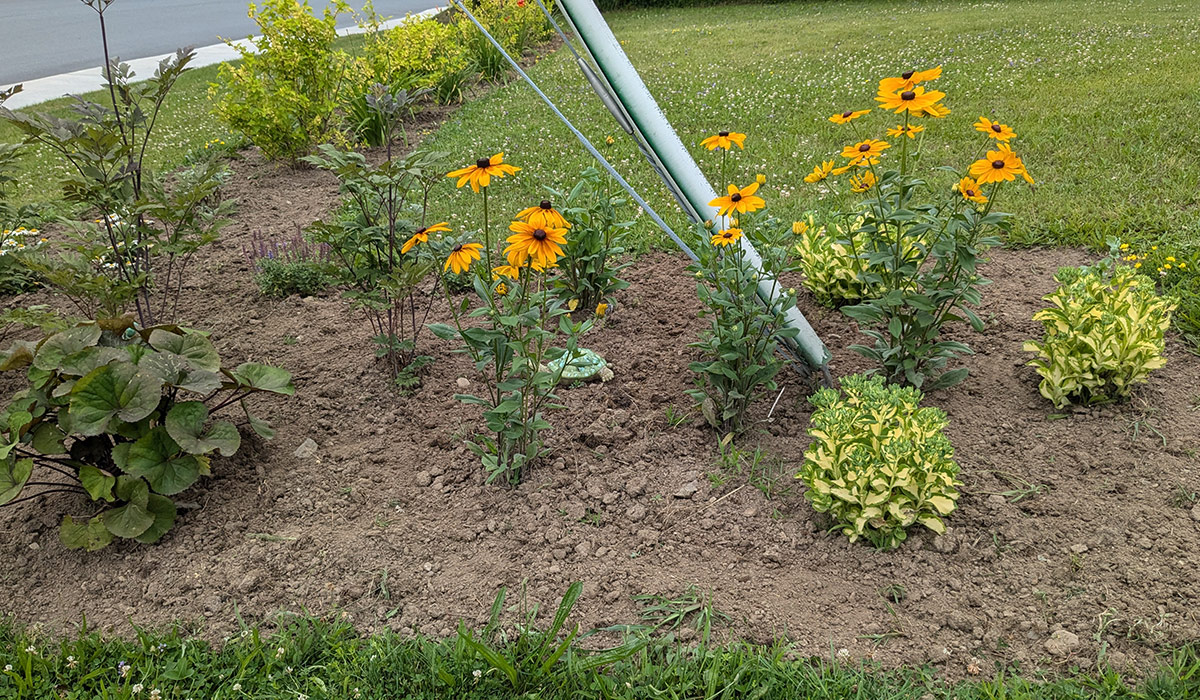 The beds built around the utility pole are already flush with color. Small black-eyed Susan plants (Rudbeckia hirta, Zones 3–7) are already sending out lots of cheerful flowers and variegated sedums pack a punch with colorful foliage.
The beds built around the utility pole are already flush with color. Small black-eyed Susan plants (Rudbeckia hirta, Zones 3–7) are already sending out lots of cheerful flowers and variegated sedums pack a punch with colorful foliage.
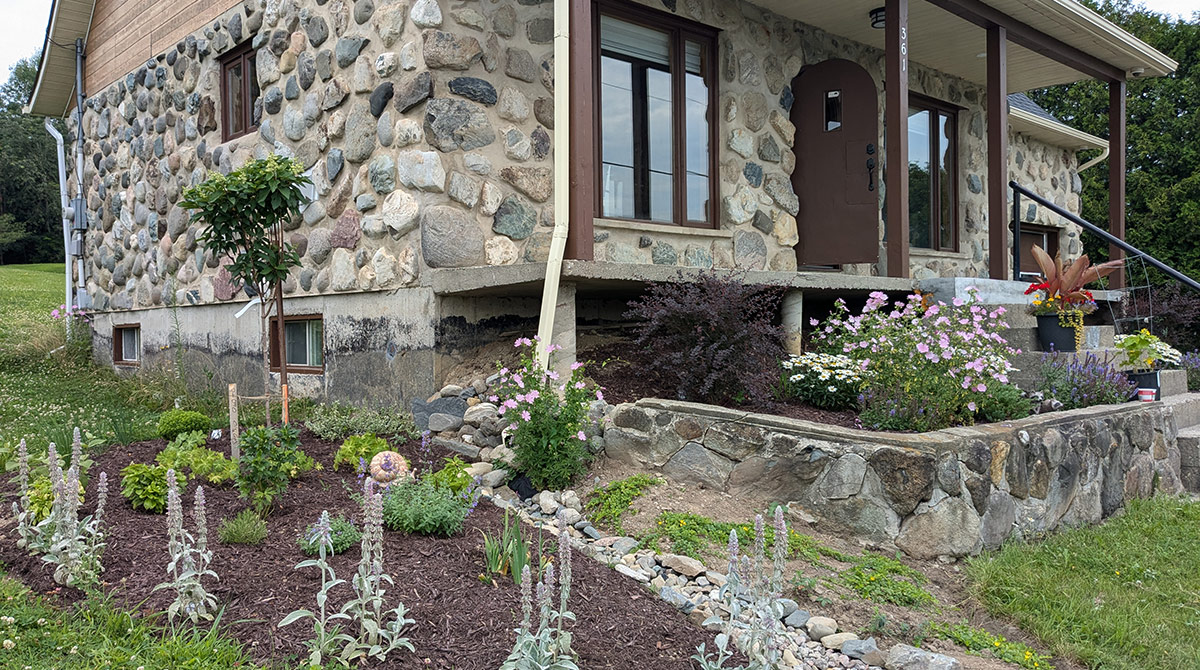 While yellow seems to be the main color motif in the beds closer to the road, more pinks and purples have been incorporated closer to the house. This makes for a more calming entryway design, but still a great compliment to the brighter colors near the road and driveway.
While yellow seems to be the main color motif in the beds closer to the road, more pinks and purples have been incorporated closer to the house. This makes for a more calming entryway design, but still a great compliment to the brighter colors near the road and driveway.
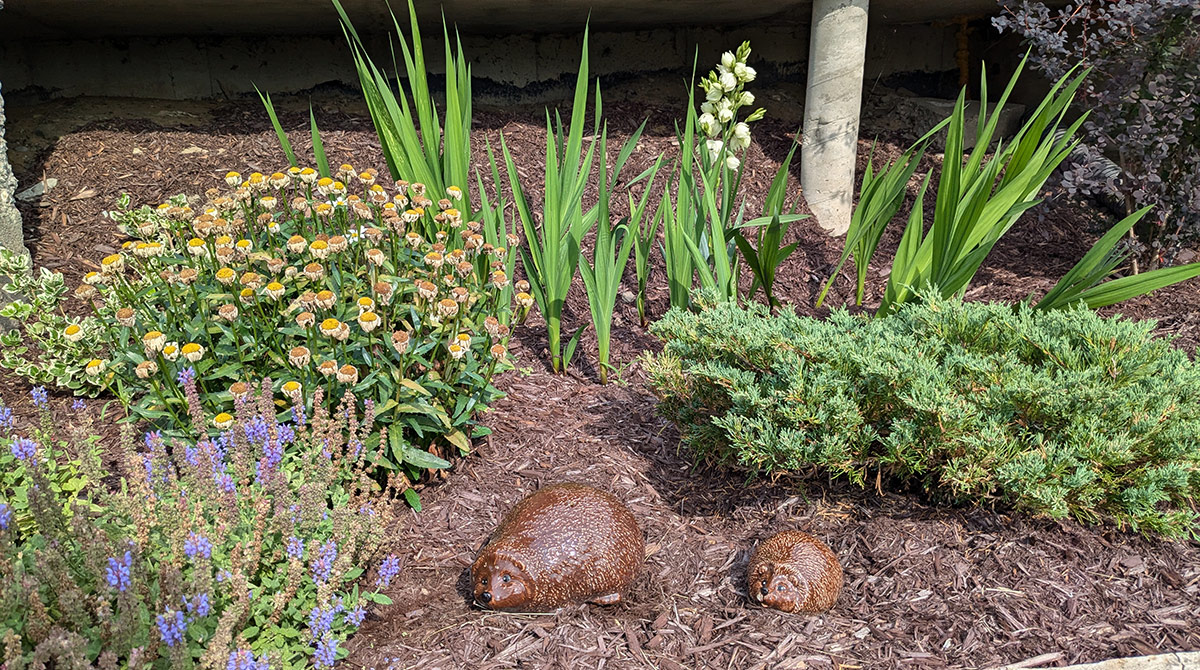 Maria did a fantastic job in selecting a diverse array of plants with vastly different textures and growing forms. Both the foliage and flower shapes will create a fabulous tapestry of interest, especially as this bed fills in.
Maria did a fantastic job in selecting a diverse array of plants with vastly different textures and growing forms. Both the foliage and flower shapes will create a fabulous tapestry of interest, especially as this bed fills in.
 Remember how tiny these golden spirea were when they went in the ground (check out Part 1 for a refresher)?? Although still a while away from becoming a delicious stretch of color along the driveway, they’ve already grown tremendously and showcasing lots of tiny purple flowers.
Remember how tiny these golden spirea were when they went in the ground (check out Part 1 for a refresher)?? Although still a while away from becoming a delicious stretch of color along the driveway, they’ve already grown tremendously and showcasing lots of tiny purple flowers.
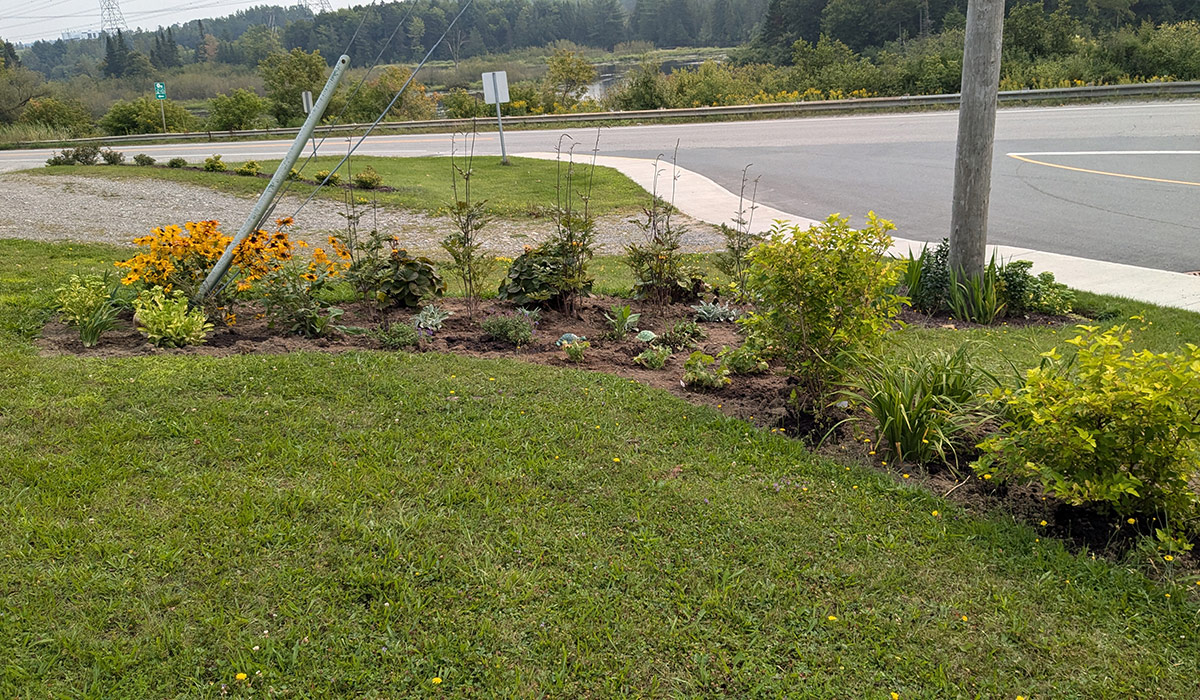 Another view of the beds around the utility pole later in the season. Those black-eyed Susans are absolutely thriving.
Another view of the beds around the utility pole later in the season. Those black-eyed Susans are absolutely thriving.
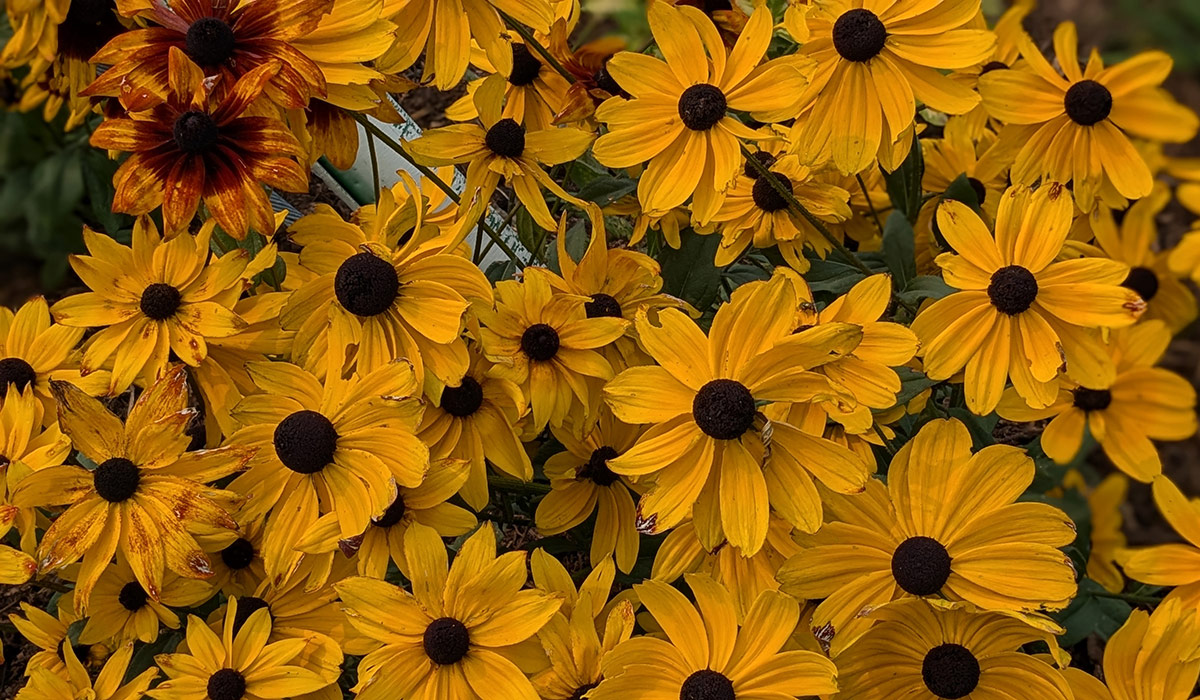 A close up of those incredible yellow blooms. Again, it’s amazing that all of these were produced from tiny plants in their first year of growth!
A close up of those incredible yellow blooms. Again, it’s amazing that all of these were produced from tiny plants in their first year of growth!
 Transitioning back to the foundation beds around the house, this perfect mound of panicle hydrangea—potentially Pinky Winky® (Hydrangea paniculata ‘DVP PINKY’, Zones 3–8)—is small, but mighty in color.
Transitioning back to the foundation beds around the house, this perfect mound of panicle hydrangea—potentially Pinky Winky® (Hydrangea paniculata ‘DVP PINKY’, Zones 3–8)—is small, but mighty in color.
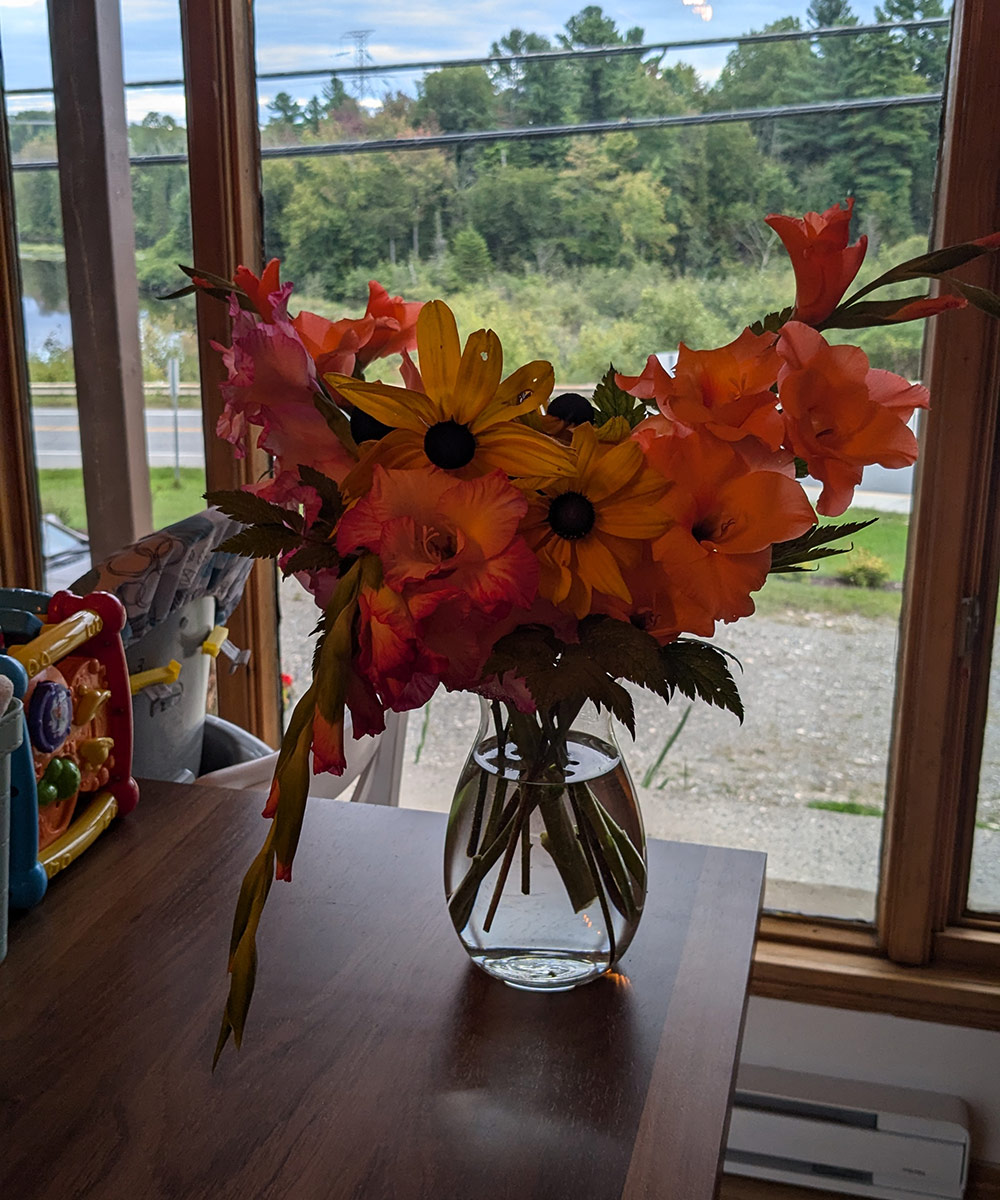 Even in its first year this garden has provided beautiful blooms worth cutting and inviting the color indoors.
Even in its first year this garden has provided beautiful blooms worth cutting and inviting the color indoors.
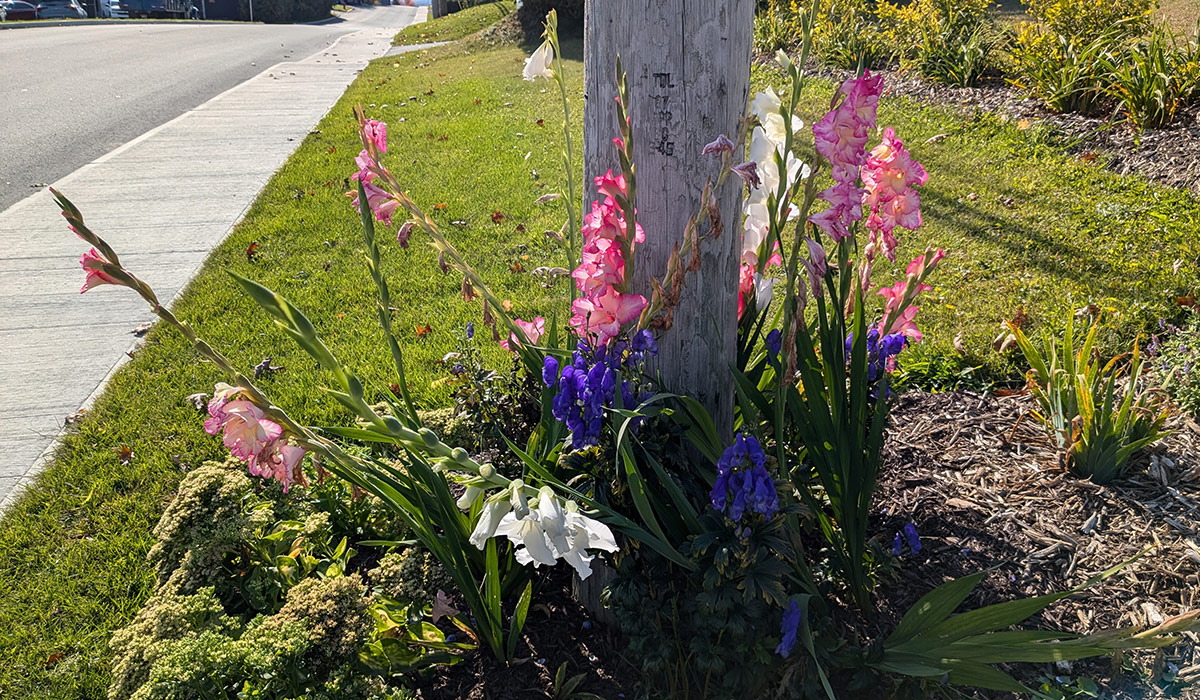 A boring utility pole got a colorful makeover with the help of this stunning group of gladiolus (which we saw a sample of in the vase above). These adaptable plants will love this full-sun location, and their corms make them easy to overwinter if you don’t want to treat them as an annual in chilly zone 4b.
A boring utility pole got a colorful makeover with the help of this stunning group of gladiolus (which we saw a sample of in the vase above). These adaptable plants will love this full-sun location, and their corms make them easy to overwinter if you don’t want to treat them as an annual in chilly zone 4b.
 In fall, flowers fade to seed heads that continue this front yard show. In a developing garden bed, leaving these seed heads has so many great benefits. Aside from their late-season interest, they provide food for passing wildlife, and also help your garden to grow by letting the seeds get carried in the wind and fall as they may.
In fall, flowers fade to seed heads that continue this front yard show. In a developing garden bed, leaving these seed heads has so many great benefits. Aside from their late-season interest, they provide food for passing wildlife, and also help your garden to grow by letting the seeds get carried in the wind and fall as they may.
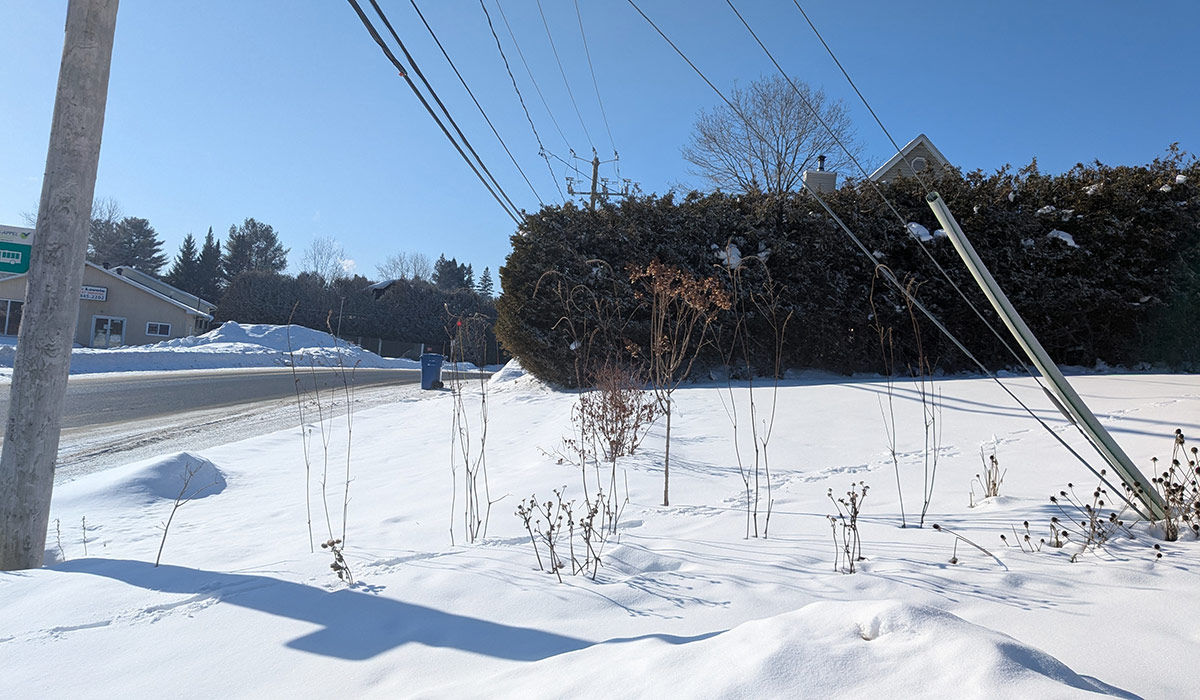 Lastly, the garden gone dormant and covered in snow. Though the growth of the year has ended, lasting stems and seed heads are still offering interest and the new plants need a season of rest to continue their expansion in the next growing season.
Lastly, the garden gone dormant and covered in snow. Though the growth of the year has ended, lasting stems and seed heads are still offering interest and the new plants need a season of rest to continue their expansion in the next growing season.
Maria, thank you so much for sharing this inspiring garden creation and all the steps taken to achieve this front yard transformation. We can’t wait to see the photos you share of your oldest son’s gardens and the designs you create at your new home!
Spring is rolling in at full steam and I know many are starting, or prepping and planning for, new garden projects. Here’s your reminder to take some good before, during, and after photos! Personally, I tend to forget to document my processes and regret it when I get to my final result. I’m making an exerted effort to log my projects this year and will share all I can with the blog—I hope you consider doing the same! And if you have projects from last spring that you would like to share, follow the directions below to submit photos via email, or send me a DM on Instagram: @agirlherdogandtheroad.
Have a garden you’d like to share?
Have photos to share? We’d love to see your garden, a particular collection of plants you love, or a wonderful garden you had the chance to visit!
To submit, send 5-10 photos to [email protected] along with some information about the plants in the pictures and where you took the photos. We’d love to hear where you are located, how long you’ve been gardening, successes you are proud of, failures you learned from, hopes for the future, favorite plants, or funny stories from your garden.
Have a mobile phone? Tag your photos on Facebook, Instagram or Twitter with #FineGardening!
Do you receive the GPOD by email yet? Sign up here.
Fine Gardening Recommended Products

Organo Republic 16 Perennial Wildflower Seeds Mix for Indoor & Outdoors
Fine Gardening receives a commission for items purchased through links on this site, including Amazon Associates and other affiliate advertising programs.
Premium 16 Perennial Wildflower Seeds Mix – Special Garden Flower Seeds Blend designed for planting indoor & outdoors across North America. With over 16 varieties and 100,000 wildflower seeds, this mix is the best solution to attract pollinators – bees, butterflies & birds are essential for garden plants health. Our Special Perennial Wildflower Seeds Mix Includes White Yarrow, Columbine, New England Aster, Siberian Wallflower, Shasta Daisy, Lance-Leaf Coreopsis, Sweet William, Purple Coneflower, Blanketflower, Gayfeather, Blue Flax, Lupine, Dwarf Evening, Primrose, Mexican Hat, Prairie Coneflower, Black Eyed Susan. Easy & Fun Growing Experience with our online guides – Don’t plant disappointment – Add more colors to your wildflower garden! We send only super hearty heirloom flower seeds with the highest germination rate and fast sprout. Our detailed growing guide helps you grow seeds the garden of your dream like a PRO. Colorful Wildflower Garden from Seeds – Grow wildflowers everywhere – Indoor in window garden or Outdoors Flower garden Garden make a beautiful design for your garden borders, pathways, field or meadow and attract pollinators. Made in the USA by Small Family-Owned Business – Quality You Can Trust – Our wildflower bulk seeds variety pack are tested at the highest germination rates before being sealed to last for up to 3 years before you need to plant. Each packet of our flower seeds variety pack is resealable to make it easy to store and has its own label with a QR code for the growing instructions.

Gardener’s Log Book from NYBG
Fine Gardening receives a commission for items purchased through links on this site, including Amazon Associates and other affiliate advertising programs.
This weatherproof five-year log book includes the following features:
· Sturdy waterproof cover to protect pages from rain and muddy soil
· Lined pages and gridded paper for plotting beds
· Five years of 12-month bloom and harvest grids for recording what you planted and when
· Authoritative appendices on composting, pruning, pest and disease control, and container gardening
· Useful reminders by season on fertilizing, mulching, and transplanting
· Space for listing your favorite sources and suppliers.

The New Organic Grower, 3rd Edition: A Master’s Manual of Tools and Techniques for the Home and Market Gardener, 30th Anniversary Edition
Fine Gardening receives a commission for items purchased through links on this site, including Amazon Associates and other affiliate advertising programs.
Since its original publication in 1989, The New Organic Grower has been one of the most important farming books available, with pioneer Eliot Coleman leading the charge in the organic movement in the United States. Now fully illustrated and updated, this 30th Anniversary Edition is a must-have for any agricultural library.




